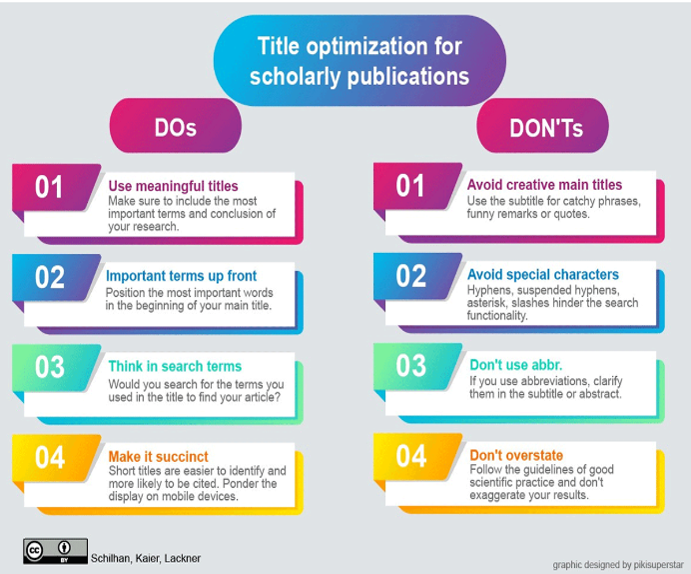Well-managed profile







Author identifiers



Publish high quality research
Publish research that significantly contributes to your field, as these are most likely to be cited. |
|
 |
In 2005 Katalin Karikó and Drew Weissman discovered that certain modifications of the building blocks of RNA prevented unwanted inflammatory reactions and increased As you can see from the citation graph below, there was a spike of citation of Karikó's papers during 2020-2023. It demonstrates that quality research, over time, consistently attracts citations. |
 |
|
Collaborate strategically


Increase research visibility and accessibility
Open Access (OA) publishing can help increase citation and usage, as well as public engagement. |
|
Examples: |
Research data sharing
Advantages of research data sharing |
|
Ways of research data sharing |
|
Examples: |
|
Examples of prominent data journal:
|
Impact case studies
| Focus on the key findings, breakthroughs, and the improvement you achieved as a result of your research. Present in simple and direct languages for both academic and non-academic stakeholders. When people are interested, they will be more likely to read and/or cite your works. |
|
Examples:
|
Search engine optimization (SEO)
Source:
Schilhan, L., Kaier, C., & Lackner, K. (2021). Increasing visibility and discoverability of scholarly publications with academic search engine optimization.
Insights the UKSG journal (34), 1-16. https://doi.org/10.1629/uksg.534 Social Media



Promote your work
Ways to promote your works |
|
|
|
An interesting example |
|
 |
Sources: (1) Bornmann, L. & Wohlrabe, K. Pattern, Perception, and Performance: Tripartite Phrases in Academic Paper Titles. CESifo Working Paper 11671 (Center for Economic Studies and Ifo Institute, 2025). |
Track the citation metrics of your papers
Track the citation metrics of your paper and adjust your strategies accordingly. |
|
 |
|
Issue about authorship |
|
 |
Sources: (1) Decius, J., Schilbach, M. Fair credit? The impact of shared first authorship on academic career evaluation. Scientometrics (2025). https://doi.org/10.1007/s11192-025-05262-w (2) https://doi.org/10.1038/d41586-025-00869-8
|

 2768 6777
2768 6777







